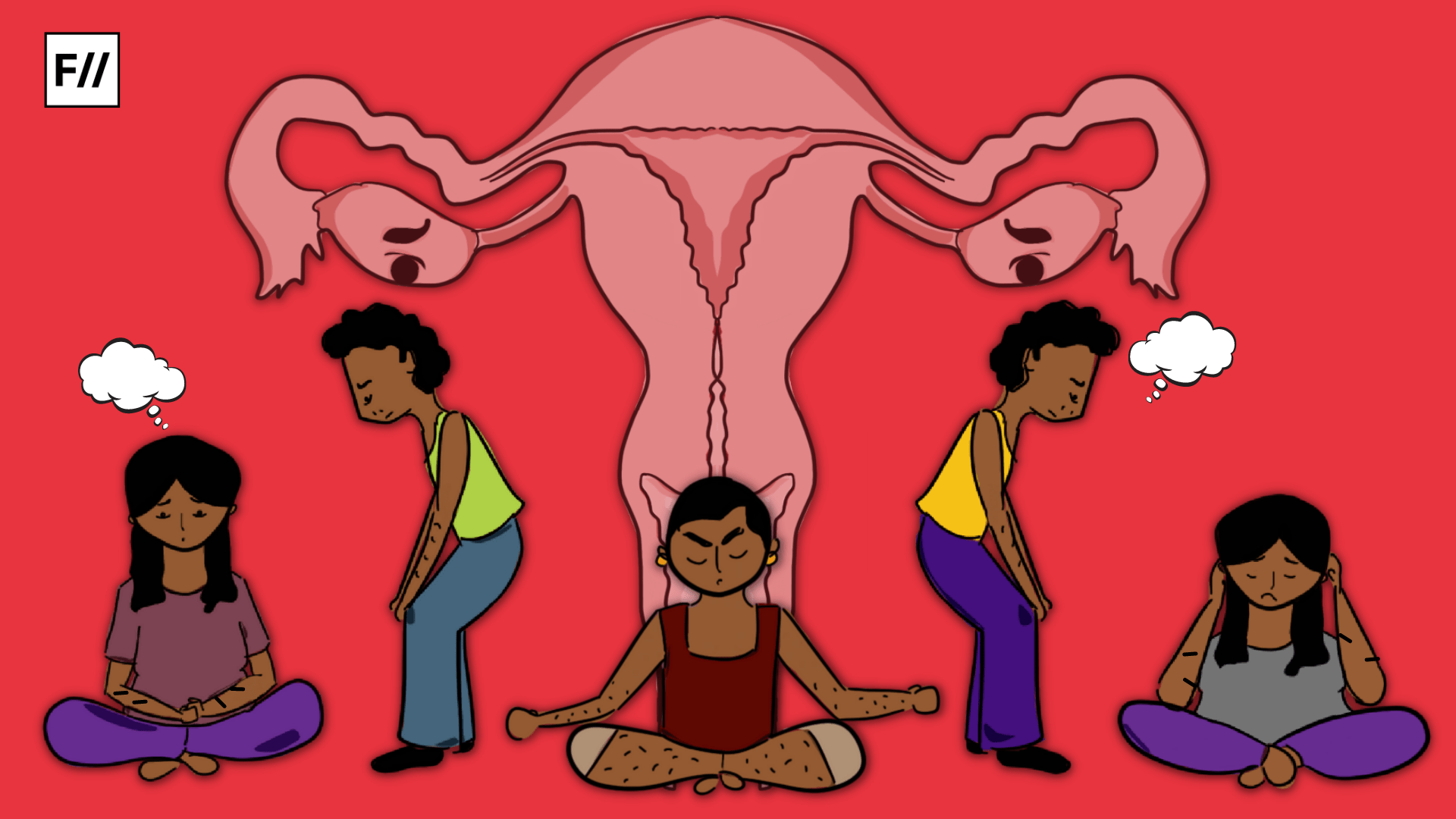Contrary to popular belief, a migraine attack is not just a bad headache. It is triggered by a set of neurological symptoms, and if you experience something similar to a migraine before or during your period, it could be a “menstrual migraine”. Though menstrual migraine attacks are often not given the importance they should be given, they are experienced by many menstruators.
Menstrual migraines, also known as hormone headaches, happen right before or during a menstrual period. It may occur approximately two days before the start of the cycle, or begin a few days into the period. Menstrual migraines may get worse with movement, exposure to light, strong smells, or high frequency sound.

Menstrual migraine can be more severe and long-lasting than other kinds of migraine headaches. Studies have shown that menstrual migraines are linked to the drop in the estrogen level that happens before the period. This drop in the amount of estrogen and progesterone can be responsible for triggering a throbbing headache. Thus, menstrual migraines are also called hormone headaches.
These kinds of migraines that are triggered by hormones manifest during different menstrual phases like menopause as well. Their type, intensity and nature can be diagnosed by a medical professional through monitoring of symptoms.
Keep in mind if something helps or worsens your headache. The following might be a few things you’d like to discuss with a healthcare physician: the pain medications you’re taking and how often you’re using them, the activities, meals, stressors, or situations which may have triggered your migraine
Symptoms of menstrual migraine
Some common menstrual migraine symptoms include severe headache, generally on one side of the head, nausea, vomiting, light sensitivity and aversion to loud noises. Some menstruators also report symptoms like diarrhea, tender scalp, changes in appetite, sweating and chills, and pallor.
Menstrual migraine may also be accompanied by premenstrual syndrome (PMS) symptoms such as bloating, breast tenderness, nausea, and mood swings. However, PMS headaches generally have symptoms different than those of a menstrual migraine. PMS headaches typically entail constipation, fatigue and joint pain as well.
Menstrual migraines can begin around three days before one’s period, and many menstruators have observed that they experience a migraine just before or at the time of their period, thereby establishing a correlation between their migraine and their menstrual cycle.
Also read: Premenstrual Syndrome: PMS Is Not About ‘Bad Moods’ That Can Be Dismissed Easily

Diagnosis and treatment
Menstrual migraines are usually not difficult to diagnose once one observes their symptoms carefully. If you observe a correlation between your migraine attacks and your menstrual cycle, it is best to consult a healthcare professional. They will likely ask you to provide a history of your migraine-related symptoms, such as: the kind and location of your discomfort, symptoms like heart pounding, pulsing or throbbing, the frequency of your migraine headaches, and more. Your healthcare professional might also ask you to take a blood test to check if there can be any other causes behind your migraine.
There is no denying the fact that menstrual migraine imposes serious implications on one’s well-being on the whole. The dismissal of menstrual pains and aches in general, coupled with the social stigma around menstruation leads to menstrual migraines being undiagnosed and uninvestigated
Keep in mind if something helps or worsens your headache. The following might be a few things you’d like to discuss with a healthcare physician: the pain medications you’re taking and how often you’re using them, the activities, meals, stressors, or situations which may have triggered your migraine.
Keeping a migraine journal can also help you observe patterns and keep a track of what symptoms present themselves, how long they last, and how frequently you have them.

There is no denying the fact that menstrual migraine imposes serious implications on one’s well-being on the whole. The dismissal of menstrual pains and aches in general, coupled with the social stigma around menstruation leads to menstrual migraines being undiagnosed and uninvestigated.
We must first of all be more informed about the fact that menstruation is not a uniform experience with similar symptoms across individuals. While some menstruators experience mild symptoms, some go through extremely taxing emotional and physical manifestations. Menstrual migraine is one such menstrual distress which is serious and debilitating. It needs to be addressed and given due attention.
Also read: Endometriosis: An Under-diagnosed, Painful Condition With Lasting Impacts
Featured Image: Ritika Banerjee for Feminism In India
About the author(s)
Apoorva is currently pursuing her Master’s in English from Jamia Millia Islamia, New Delhi. When she’s not re-reading the letters by Virginia Woolf, she likes to try her hand at scribbling poetry. Her areas of interest revolve around Feminist Theory and Absurdist Fiction. She can be found brewing tea at midnight, complaining about our Sisyphean existence




